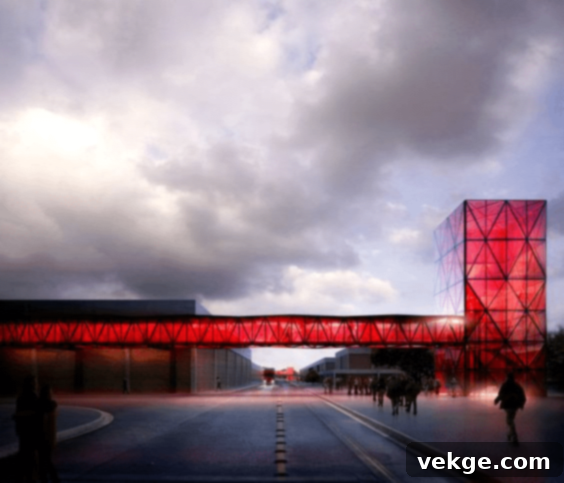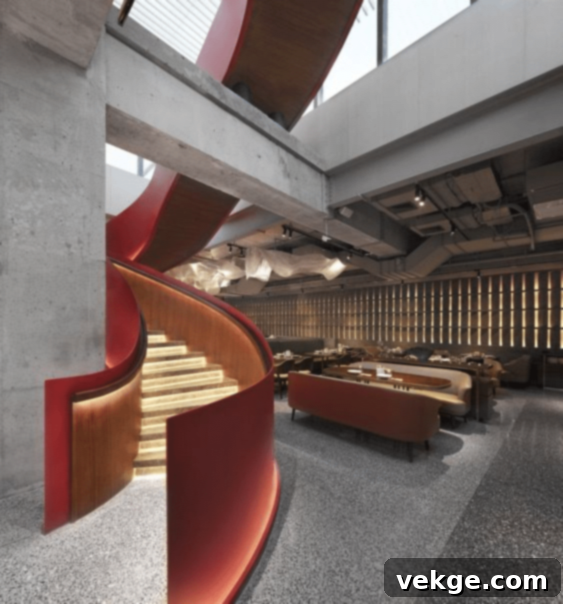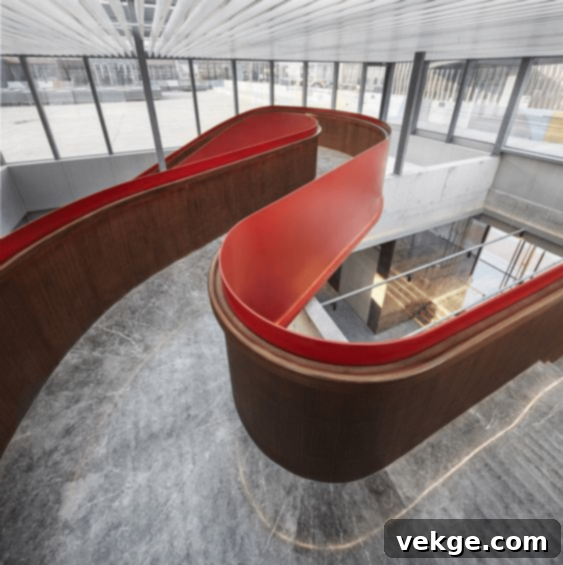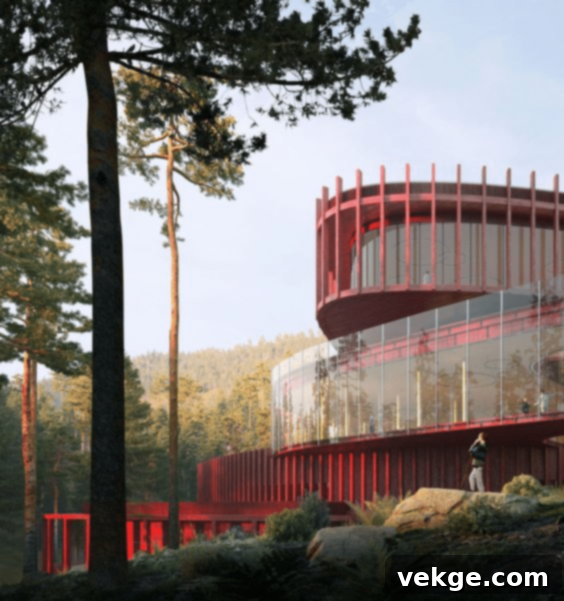Elevate Your Designs: The Essential Guide to 3D Visualization for Effective Communication
In today’s fast-paced design and architecture industries, effective communication is paramount. Bringing complex ideas to life in a way that resonates with clients, stakeholders, and team members can be challenging. This is where 3D visualization steps in. At its core, 3D visualization is the art and science of creating graphic content using advanced three-dimensional computer programs. It offers a revolutionary and modern approach to project visualization, empowering designers and clients alike to vividly envision the future appearance and functionality of objects and spaces long before they ever move from concept to physical realization.
The journey of 3D visualization is intricate, involving a series of detailed and highly specialized tasks. These include meticulous 3D modeling, applying realistic textures, sophisticated lighting setups, and finally, the rendering process that generates the final, convincing image. For every element to integrate seamlessly and function correctly, impeccable communication among all project parties—from architects and engineers to marketing teams and clients—is absolutely essential. This article will delve into how 3D rendering, a critical component of visualization, can become your most powerful ally in effectively communicating your design ideas, enhancing understanding, and accelerating decision-making.
3D Rendering: Unveiling Every Detail and Dimension of Your Design
Let’s get straight to the point: 3D rendering is an indispensable tool for the comprehensive and detailed project visualization of architectural and interior design projects, as well as product development. It transcends the limitations of traditional 2D drawings or static sketches, allowing you to demonstrate not only the final aesthetic appearance of an object or space but also to precisely convey its scale, proportions, intricate textures, accurate colors, and dynamic lighting. This level of precision is crucial for ensuring that all stakeholders have a unified understanding of the project. For example, in architectural design and beyond, 3D rendering excels in:
- Scale and Proportions: Accurate architectural visualization provides clients, investors, and construction teams with an unambiguous understanding of the dimensions and spatial relationships between structural elements, furniture, and even human figures. This clarity prevents misunderstandings regarding space utilization, circulation paths, and the overall monumental or intimate feel of a structure. A specialized 3D visualization studio can accurately model everything from individual rooms to expansive urban landscapes, ensuring every component fits perfectly within its intended environment.
- Textures and Materials: The highly accurate reproduction of material textures—be it the rough elegance of natural stone, the warmth of polished wood, the sleekness of brushed metal, or the sheen of glass—is critical. A professional 3D visualization studio can render materials with such fidelity that it helps stakeholders assess aesthetic qualities, understand maintenance implications, and most importantly, ensure the correct and optimal choice of materials. This aspect of interior visuals is crucial for the effective presentation of creative solutions, allowing clients to virtually “touch and feel” the proposed finishes before any actual procurement.
- Color Palettes: Correct color reproduction through 3D rendering offers a realistic and emotive perception of the project. It allows designers to test and validate color schemes under various lighting conditions, ensuring that the chosen palette not only emphasizes core design ideas within architectural visualization but also evokes the desired mood and atmosphere. This helps in making informed decisions about paint, fabric, and finishing colors, avoiding costly changes later in the project lifecycle.
- Dynamic Lighting: The interplay of natural and artificial light profoundly impacts how a space or object is perceived. 3D visualization allows for extensive experimentation with light sources, intensities, and directions. A 3D visualization studio can simulate different lighting conditions—from bright midday sun to a soft evening glow, or the precise illumination provided by a complex artificial lighting scheme. This helps visualize how an object or space will look at different times of the day, under various weather conditions, or with specific task lighting. This process can be further enhanced by integrating aspects of virtual reality into the rendering, offering immersive walkthroughs that highlight the lighting effects in real-time.
Such meticulous detail in 3D visualization not only helps the audience better understand the project’s physical attributes but also enables them to evaluate its comprehensive thoughtfulness, functionality, and aesthetic harmony. This significantly enhances the perceived value of the design, leading to quicker approvals and greater client satisfaction. Furthermore, it empowers designers to identify and rectify potential issues in the virtual realm, saving considerable time and resources during the physical construction or manufacturing phases.

3D Rendering: Illustrating the Functionality and Usability of Your Design
Moving beyond static aesthetics, 3D rendering visualization unlocks incredible opportunities to demonstrate the functionality, usability, and operational efficiency of a design. This powerful tool allows stakeholders not only to evaluate the aesthetic aspects of the project but also to truly understand how the object, product, or space will be used and interact in real life. Thanks to dynamic rendering and animation capabilities, you can clearly demonstrate movement, interaction between system components, and the overall design performance, providing an experiential understanding that 2D plans simply cannot match. Consider these examples across various design disciplines:
- Motion and Mechanism: In the field of industrial design, product design, or engineering, 3D visualization can meticulously recreate the mechanism of complex devices. By showing how individual elements move, pivot, or interact in a simulated real-world use scenario, designers can identify potential clashes, evaluate ergonomic efficiency, and optimize mechanical performance. This allows engineers and designers at a 3D visualization studio to accurately work out every detail, test different operational sequences, and refine functionality long before starting costly physical production or prototyping.
- Interaction with Space: In architecture and interior design, sophisticated architectural visualization can be utilized to vividly show how people will interact with and navigate through a space. Virtual walkthroughs and interactive models help clients imagine how zoning, furniture arrangement, and accessibility features affect the convenience, flow, and overall functionality of the premises. This is particularly valuable for commercial spaces, public buildings, or residential layouts where user experience is paramount. It allows for testing different layouts and ensuring the design truly meets user needs and expectations.
- System Performance and Productivity: In landscape design or urban planning, 3D visualization can demonstrate how dynamic components, such as advanced irrigation systems, outdoor lighting networks, or even smart city infrastructure, will perform under different conditions. For instance, a rendering could simulate water distribution, light dispersion at night, or pedestrian flow through a proposed plaza. This allows customers and urban planners to visualize the effectiveness of the layout, understand its operational impact, and assess factors like environmental sustainability or maintenance requirements, ensuring the design is not just beautiful but also highly efficient.
Utilizing 3D visualization to illustrate functionality and user experience is absolutely essential for understanding the overall value and practicality of a design. Clients, investors, and end-users can not only see but also virtually “feel” and interact with the project, which significantly reduces uncertainties, answers critical questions, and facilitates more confident investment decisions. Such a deep, experiential understanding of functional characteristics distinguishes projects in a competitive market, providing them with a significant advantage through unparalleled visibility, attractiveness, and demonstrable utility. The integration of virtual reality (VR) and augmented reality (AR) further enhances this, transforming static visualizations into truly immersive experiences, offering a unique opportunity for product design and comprehensive visualization services.

Architectural Rendering: Expressing the Mood and Emotion of Your Design
Now, we’re delving into perhaps the most profound aspect of 3D visualization: its pivotal role in conveying the mood, atmosphere, and emotions intrinsically embedded within a design. Using this sophisticated tool, designers can go far beyond merely showcasing the physical appearance of an object or space; they can effectively communicate the very essence, style, and emotional tone of the project, making each design element meaningful, impactful, and truly memorable. This ability to evoke feeling is what transforms a good design into an exceptional one. Consider how 3D rendering achieves this:
- Atmosphere and Ambiance: In architectural projects, architectural visualization can masterfully recreate the unique atmosphere of a place. By realistically simulating how natural light penetrates through windows, how artificial light casts intricate shadows on different surfaces, or how a combination of these elements affects the overall feeling of the space, designers can craft compelling narratives. For example, rendering soft, diffused morning light filling a bedroom with warmth can instantly create a sense of comfort, tranquility, and domestic bliss—a critical selling point for real estate living spaces. Conversely, dramatic, focused lighting in a gallery space can evoke a sense of awe and reverence.
- Style and Aesthetic Identity: In the realm of interior design, product design, or even fashion, 3D visualization allows you to demonstrate in exquisite detail the intended style solutions—from the timeless elegance of classic designs to the sleek minimalism of modern aesthetics, or the rustic charm of a farmhouse motif. Photorealistic 3D rendering can emphasize the refined elegance of bespoke furniture, the intricate sophistication of decorative elements, or the cutting-edge modernity of integrated technological innovations. This empowers the viewer to appreciate the stylistic choices and the expressive qualities of every single detail, ensuring the design’s unique identity is fully understood.
- Tone and Emotional Resonance: Determining and conveying the emotional tone of a design through 3D visualization involves the masterful use of color, texture, lighting, and composition. These elements can be manipulated to reflect a spectrum of emotions: energy and dynamism for a commercial gym, serene calm for a spa, opulent luxury for a high-end boutique, or functional simplicity for an office space. For instance, rich, dark color palettes combined with luxurious textures can evoke a sense of solidity, sophistication, and elegance, while bright, airy colors with natural materials might bring lightness, openness, and a feeling of freshness. 3D visualization effectively communicates these subtle yet powerful emotional cues.
Utilizing 3D rendering to express mood and emotion allows the audience to not only visually perceive but also emotionally connect with the impact and intent of the designer. This capability does more than just enhance the perception of the project; it cultivates a deeper emotional connection between the viewer and the design, fostering greater engagement, memorability, and ultimately, a stronger impression. Clients are not just presented with a blueprint; they are invited into an experience.
Thanks to the advanced capabilities of 3D visualization, each project can be presented not merely as a collection of physical objects or structural components, but as a living, breathing space or product that expresses specific ideas, evokes desired emotions, and tells a compelling story. This significantly increases its intrinsic value and market appeal. Advanced techniques, including immersive virtual reality (VR) walkthroughs, further augment this experience, making it profoundly engaging. With the specialized expertise of a dedicated 3D visualization studio or an architectural visualization studio, the potential to captivate, influence, and secure successful project outcomes becomes even more profound and impactful.

Conclusion: The Future of Design Communication with 3D Rendering
The renowned architect and designer Frank Lloyd Wright famously asserted, “Form and function should be one, joined in a spiritual union.” This profound synergy is precisely what modern 3D visualization and rendering technologies empower us to achieve. Far from being a mere luxury, 3D rendering has become an indispensable and deeply rooted component across various design disciplines, particularly advancing niches like interior design, architecture, product development, and urban planning. It allows for the creation of truly superior projects by enabling designers to articulate and demonstrate their most innovative ideas with unprecedented clarity, depth, and emotional resonance.
The ability of 3D rendering to convey intricate details, illustrate dynamic functionality, and express the subtle moods and emotions of a design fundamentally transforms the communication process. It bridges the gap between abstract concepts and tangible realities, fostering deeper understanding, streamlining collaboration, and accelerating decision-making among all stakeholders. This level of visual fidelity not only minimizes misinterpretations and costly revisions but also elevates the entire design experience, making projects more compelling and desirable.
To truly elevate your projects, gain a significant competitive edge, and ensure your business thrives in an increasingly visual world, partnering with expert 3D visualization studios is not just an option—it’s a strategic imperative. Nothing conveys design ideas, evokes desired emotions, or demonstrates functionality with greater impact and precision than the power of 3D rendering. Embrace this transformative technology to take your business to the next level, inspire confidence in your clients, and bring your most ambitious visions to life.
